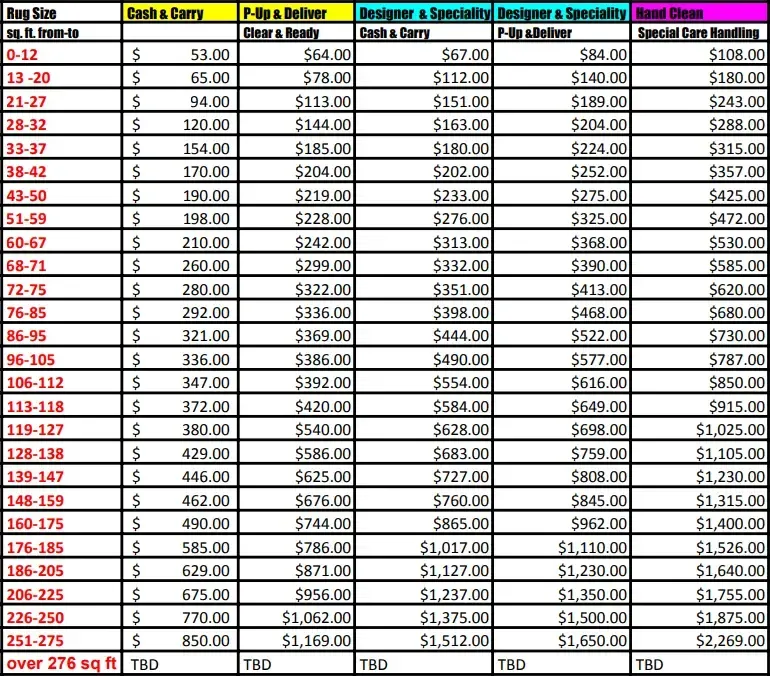RUG WASHING & REPAIR
Oriental & Persian Rug Washing
Sequoia has been cleaning the Bay Area's finest Oriental and Persian rugs for generations. Like any possession of value and beauty, the fine Oriental rug should be cared for properly. These fine works of art can withstand foot traffic, mud, dirt and a lot of abuse, but it should be expertly cleaned regularly, That is why Sequoia has built one of the most modern & specifically designed rug cleaning facility that houses an automated rug cleaning and controlled drying operation. Sequoia understands the needs of each individual rug and is prepared to clean each one with the care and thoroughness necessary to assure long life and restore lasting beauty.
When looking for a company to entrust with your valuable investment or family heirloom, go with a company you can trust to handle your rug as if it was our own. Sequoia is a company that rug merchants trust for their cleaning needs.
Rug Repair & Restoration
Re-weaving a beautiful Oriental rug is a fine and delicate art in itself. Yet accidents do happen and if restoration and repairs are done correctly, can be unnoticeable.
Our weavers and repair specialists are professionally trained. Whatever the problem is, let our knowledge, experience and caring of Oriental rugs serve you well. From end stops to complete restoration you can rest assured that our craftsmanship will be the best and the price fair. Our rug restoration services include:
- Restorative Washing
- Foundation Work
- Re-weaving
- Re-knotting
- Serging
- End Stops
- Re-Fringing
- Color Bleed Removal
We offer free estimates of repairs and restoration after cleaning.
Pickup & Delivery
Sequoia is proud to offer professional pick up and delivery services for our clients. Our crews will pickup your rug, which is free and cleared of furnishing and lay upon return. Can’t move your furnishing off the rug? No problem, we will move your furnishings for you for a nominal charge based on scope of work.
Oriental and Persian Rug Washing Price List
Note: Prices quoted below are cleaning of the rug only, and doesn’t include furniture moving. Some rugs require special care and handling, costs are dependent on scope of work. Minimum charges may apply. Trip charge applied to all pick up and delivery services.

Rug Washing Process
Just like our clothes, area rugs are unique in construction, materials and design, requiring different care and handling techniques when washed. Your area rugs should never be cleaned in the home, proper recommended cleaning method is for area rugs to be washed front and back at a plant facility.
The dyes used for handwoven or hand knotted rugs are different from the dyes used in the construction of your wall to wall broadloom carpeting. The products used for the cleaning of your wall to wall carpets are especially formulated for broadloom carpet and should never be used on your handwoven or hand knotted area rugs. Use of steam cleaning soaps and solutions can damage your rug and cause the dyes to breakdown and eventually run.
Sequoia has been washing rugs in our automated rug washing plant since 1950. We have the knowledge and experience to protect your investment.
Our Process
Pre-Inspection
- Inspection is the fist step in the cleaning process. Each rug is individually pre-inspected, at our plant, to determine the condition of the rug and establish the proper care and handling of the rug to achieve the best cleaning results.
Dusting
- Prior to washing, rugs are “Dusted”. Dusting is the process of removing loose abrasive soil embedded deep in the rug foundation. This step of abrasive soil removal is crucial to the process of washing rugs. Specially designed equipment is utilized to assure the removal of particulate matter vacuums cannot effectively remove. Sequoia processed the rugs though 2 dusting systems, to assure the fine particulate matter is removed.
Pre-Wash Preparation of Rugs
- After the rug is “Dusted” to remove particulate matter, we treat the rug for stubborn soil, heavy traffic areas and stains. Special attention to pre-washing the fringe is another critical step to loosen ground in soil which causes fringe to break and become dull and lifeless.
Washing
- Once the rug has been properly dusted and pretreated it is ready to be washed, using specially formulated soaps. Rugs are processed individually through an automated system which gently shampoos, brushes, rinses and wrings, leaving the rug damp to the touch.
Rugs are then detailed, by brushing the nap, grooming the rug and straightening the fringe. After detailing the rugs are prepped for drying.
Drying
- Drying the rug in the shortest amount of time is essential to the rug washing process to minimize any color migration of the dyes. After the rugs are washed, we hang the rugs in a controlled dry room. Our dry room is heat and humidity controlled allowing us to dry washed rugs in hours.
Post Drying
– After the rugs have gone through the drying process, we perform moisture detection tests, using sensitive moisture detection equipment, to ensure the rug is completely void of moisture. Once the moisture detection is performed the rugs and fringes are further detailed and groomed.
Quality Assurance (Post Inspection)
– Prior to the rugs being approved for delivery of client pick-up, we perform a post inspection, to make sure the rug is as clean as it can be. If the rug doesn’t pass inspection or the Foreman feels the rug can benefit from additional work, we will notify the client about our recommendations and authorization.
10 Myths About Oriental Rugs
Oriental rugs seem to be steeped in the mysteries of the East. It can start with a rug retailer giving a "little story" with the rug to enhance the sale, or just wrong information that Is repeated so many times it takes on a life of its own. So, like television's MythBusters, let's bust a few rug myths.

